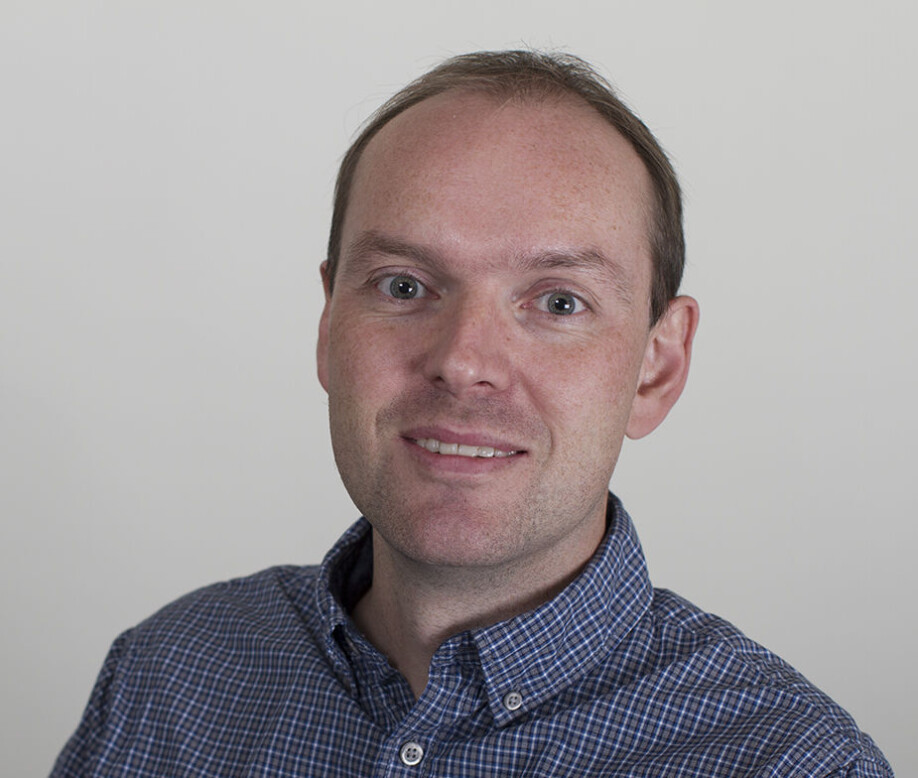THIS ARTICLE/PRESS RELEASE IS PAID FOR AND PRESENTED BY Nord University - read more

Three new books published on successful study method
Fail rates in demanding subjects have decreased considerably since Nord University Business School (HHN) adopted the SI study method at Nord University, Stjørdal. More people will now get to learn about the successful method.
Up until 2016, the figures looked pretty gloomy in relation to the law courses that took place at Nord University in Stjørdal. Fail rates were alarmingly high, and students felt that the course was very demanding. Then, Senior Lecturer Roger Helde introduced the internationally recognised methodology called SI (Supplemental Instruction - see fact box), which is a student-active method of learning. It turned out to be a smart move: The fail rate – which at one point was as high as 30 percent – dropped down to zero.
The method, which complements regular teaching, basically involves advanced students following a structured scheme where they provide help and guidance to new students.
In light of the positive experiences and results, this method of learning will now be introduced at several of Nord University’s faculties. “The method is very effective,” says Abbas Strømmen-Bakhtiar, who is a professor at Nord University Business School. Together with his colleagues Roger Helde and Associate Professor Elisabeth Suzen, he is the editor of three recent academic anthologies on the successful method. Recently, the collections of articles, with several Norwegian and international contributors, were published by the renowned German publishing house Waxmann.

Important contributions
Abbas says that the books are a direct result of the SI project at Stjørdal, and extensive contact with other academic communities abroad.
“Several international universities also provide their SI experiences in the anthologies,” he says when we talk to him on the Teams meeting app.
The first anthology is about SI and digital technology, and the other two are about student learning processes and organisation and leadership.
The academic contributions in the anthologies are not only considered important at Nord University, but also internationally.
Until a few years ago, Nord University was the only Norwegian educational institution that utilised SI. Since then, the University of South-Eastern Norway and Molde University College have also adopted it. The method is also used by a number of Swedish, American and British universities.
In a few months, more Nord University students and lecturers will learn more about it and be certified as instructors who can teach it.
“The courses are planned for the autumn, and we already have 9 to 10 lecturers from Nord University Business School who wish to partake in order to become certified. Afterwards, they will be able to supervise the selected and advanced students, who in turn will teach lower level students. Eventually, we will also introduce this at even more faculties,” says Abbas.
Available to everyone via Open access
Terje Andreas Mathisen, Pro-Dean of Research at HHN, is proud of the efforts that his colleagues have made.
“The publication of these three academic anthologies is a major boost that will be noticed in the research communities that deal with this topic. I am very pleased that the contributions are openly accessible so that the research results can be utilised by everyone to give positive results for student-active learning, both for students in Norway and abroad.”
“Everyone who has managed book projects knows how demanding it is, and impressive work has been put in by the editors regarding the steady management of three projects at the same,” he says.
In addition to the three aforementioned collections of articles, Professor Abbas Strømmen-Bakhtiar has recently published another book at the Waxmann publishing house. This book, titled 'Revisiting New Public Management and its effects – Experiences from a Norwegian Context',was co-written together with Associate Professor Konstantin Timoshenko.
See more content from Nord University:
-
Kateryna's university has been bombed three times – but she's still teaching
-
5 things you didn't know about smart cities in the Arctic
-
AI sparked an idea that could improve road safety in Norway
-
These algae have been adapting for hundreds of millions of years
-
Could traces of bacteria in water combat salmon disease?
-
Bladderwrack in animal feed has the potential to reduce methane emissions





































